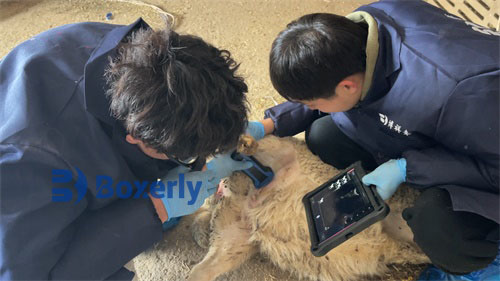The effect of different egg collection intervals on the efficiency of in vivo egg collection: In terms of interval time, most researchers believe that collecting eggs twice a week is better than collecting eggs once a week. For example, Gibbons' study showed that collecting eggs twice a week significantly increased the number of retrieved eggs and the rate of high-quality oocytes compared to collecting eggs once a week. Galli et al.'s study showed that the number of high-quality oocytes obtained twice a week was higher than once a week. This may be due to the appearance of dominant follicles during live egg collection at an interval of one week, leading to some follicles becoming blocked or degenerated, and some eggs beginning to age, resulting in a decrease in egg quality. Vander Schans et al. conducted a study on live egg collection once a week and twice a week, and found no difference in the number of follicles collected and oocyte recovery rate between the two. However, the number of follicles and oocytes collected per week in the latter was higher than in the former. However, Simon et al. compared three consecutive sexual cycles with intervals of 48 hours and 96 hours, and the results showed that the recovery rate and oocyte morphological integrity rate of the 48 hour group were initially higher than those of the 96 hour group, followed by a decrease in oocyte quality, while the 96 hour group remained relatively stable. This indicates that a short time interval between two oocyte collections may affect the development of follicles. Zhou Xinghai et al. used ultrasound biopsy to collect eggs from cows at intervals of 5, 7, and 10 days. COCs were matured and cultured in vitro, and parthenogenetic activation was performed on oocytes with polar body discharge to observe embryonic development. It was found that the development rate of morula and blastocyst in the 7-day interval treatment group reached 28% after in vitro culture, while the 5-day interval treatment group obtained 12% of morula and blastocyst development after in vitro culture
Live egg collection equipment
After in vitro culture, the treatment group with a 10 day interval achieved a 16% development rate of morula and blastocysts. There was no significant difference in cleavage rate. Therefore, it has been confirmed that a 7-day interval between live puncture and egg collection is the most appropriate and can obtain a certain number of high-quality oocytes. The research results of Viana et al. showed that in vivo egg collection at intervals of twice a week can significantly improve egg quality, but the average number of retrieved eggs per head is less than once a week. The research results of Garcia et al. showed that there was no significant difference in the number of follicles per head puncture and the number of eggs per head between once a week and twice a week live egg collection. However, twice a week live egg collection can obtain more eggs in the same week; Moreover, collecting live eggs twice a week can induce synchronization of follicular waves. Previous studies have yielded inconsistent results, but most believe that eggs obtained from live egg collection twice a week have better quality. This study showed that there was no significant difference in the number of retrieved eggs between receptor egg collection twice a week and once a week; The difference in the ratio of high-quality oocytes obtained is significant. This may be due to the removal of dominant follicles, which reduces the inhibition of secondary follicles by dominant follicles, resulting in the development of more small follicles during in vivo egg collection conducted twice a week. Therefore, collecting eggs twice a week can result in a higher number of high-quality oocytes. In addition, setting a reasonable egg retrieval interval should consider not only the number of retrieved eggs and recovery rate, but also the ovarian recovery of the donor cattle. The study suggests that egg retrieval twice a week is feasible without affecting ovarian function.








